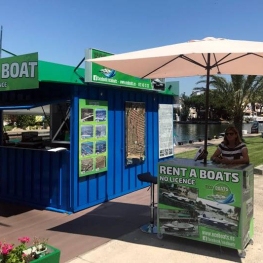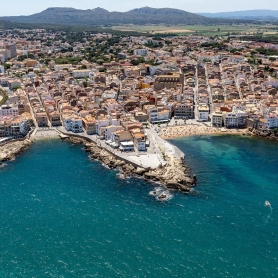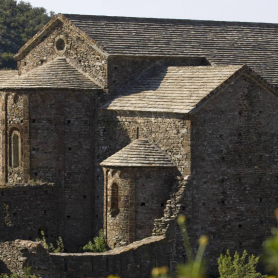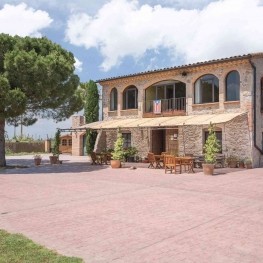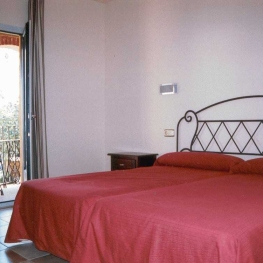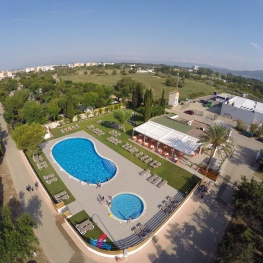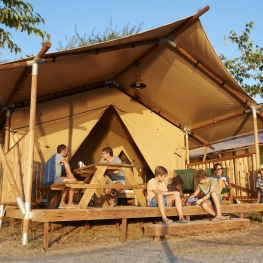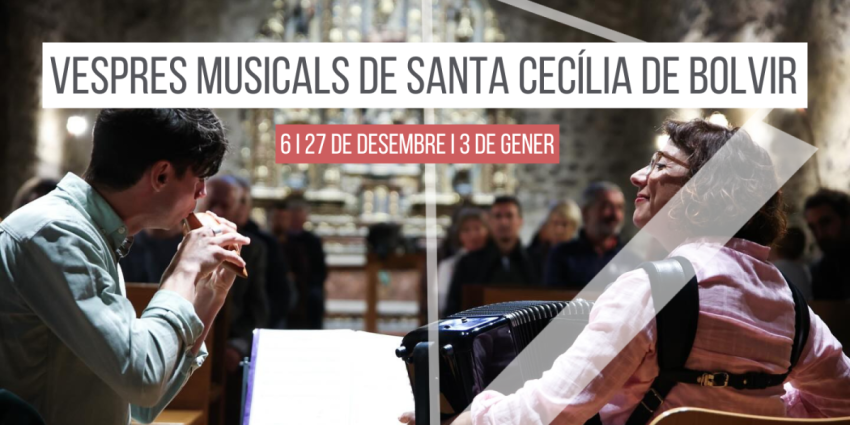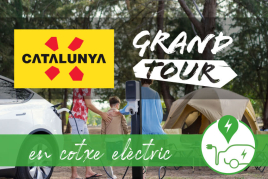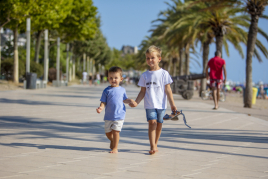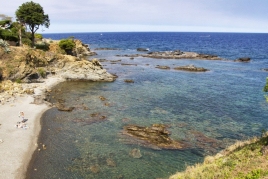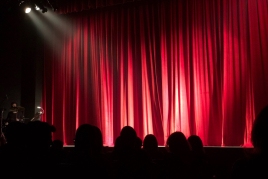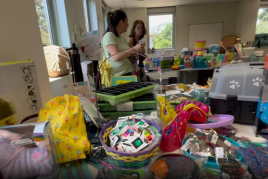Pedaling in the Empordà wetlands
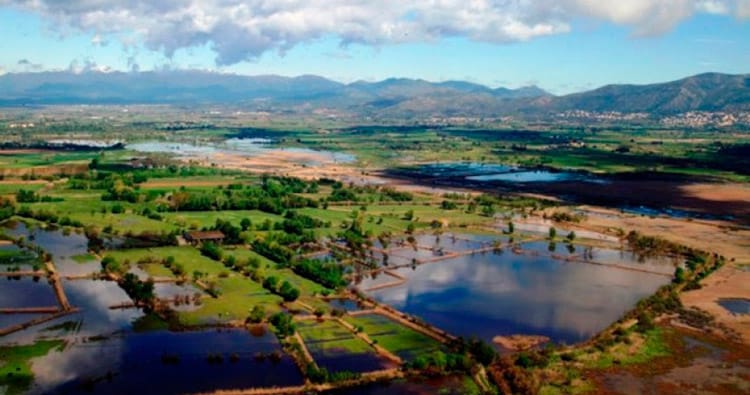
The Natural Park of the Empordà Marshes is one of the most recognized Catalan wetlands, along with the Ebro Delta and the Delta del Llobregat. His size and natural spaces have the ability to do activities.
The route "Pedaling Empordà wetlands" that we propose to discover some spaces of this nature from a bike and get into the Alt Empordà.
The route runs through the two integral reserves hosting the natural park of the Llaunes and the Lakes, and surrounded by rice fields, riparian forests and meadows and crops, following the coastline. For this reason, many sections of this route coincide with the GR-92 (path of the Mediterranean).
This is a circular route of 38 km that can be shared with the family as its difficulty is low.
It is also a proposal to combine active tourism and implement, to perfection, nature tourism, as it along all the way are data points that allow further knowledge ye accurately interpret natural space.
The Cortalet
This route, but is intended to launch from any point, the start in Castelló d'Empúries , specifically, in the center of the Cortalet information. So we loaded the bike and protect ourselves from the sun and mosquitoes (especially in spring and summer) and we headed there.
 The Cortalet is one of the information centers of the reserve. In it you will find information about the flora and fauna of the same and even can get more information about the route that we present.
The Cortalet is one of the information centers of the reserve. In it you will find information about the flora and fauna of the same and even can get more information about the route that we present.
Behind Cortalet is where we take the road following the signs. Shortly we find Cortalet lake, which we will right the itinerary.
The pond is a pond Cortalet a recovery with the aim of supplying the water to the land to regenerate the natural diversity lost through desiccation. This lake is the Franch Quim Observatory from which, carefully and quietly, you can see the animals that live there.
The lake Rubina and Tec
We continue our journey across the river Muga for their gateway and reach the beach Rubina, but within the municipality of Castelló d'Empúries , through the development of Empuriabrava . This space is the result of the distribution of land among neighbors Castelló confiscation due to late nineteenth century. The different pieces, long and narrow, are separated by rows of tamarind. Currently, most of these parts are engaged to grass or forage crops.
 Later arrive at Estany Tec, where the viewpoint Carles Fages de Climent, following this track will find the right ways that will lead to Rubina beach, natural beach noted for its rich flora and fauna and unique ecosystems dunes and sulzures. This beach has several bike racks.
Later arrive at Estany Tec, where the viewpoint Carles Fages de Climent, following this track will find the right ways that will lead to Rubina beach, natural beach noted for its rich flora and fauna and unique ecosystems dunes and sulzures. This beach has several bike racks.
Back to the marked route will cross the channel reach Sta.Margarida medium.
The canals and ponds, resulting from human presence
Continuing the journey we will find man-made structures that have transformed the natural landscape of the area with the goal of having people explode.
We enter, therefore, in an area where crops are present and pens (of livestock farms). Also, we can see the channel that was intended Mig drive water mills to operate them.
Lake in Palau
 The area now occupied by the lake of Palau was, at one time, part of Lake of Castelló. This place, crossed by drainage channels that allowed the drying of the former lagoon, is maintained with a flood level that favors the presence of reed, which forms a dense patch of vegetation that obscures the water. the reed is very important for the conservation of many species of birds.
The area now occupied by the lake of Palau was, at one time, part of Lake of Castelló. This place, crossed by drainage channels that allowed the drying of the former lagoon, is maintained with a flood level that favors the presence of reed, which forms a dense patch of vegetation that obscures the water. the reed is very important for the conservation of many species of birds.
This part of the route runs through an asphalt road, until you reach a right hand turning, signposted to take us to the rafts of Garrigues, which in total in his three and are the result of mining activity. Currently do not have this purpose and with the passage of time have become an area of ??reeds and reed-level interesting flora and fauna.
Vilaüt Pond and Ecomuseu - Flour Mill of Castelló
The pond and the integral reserve Vilaüt it forms are one of the three spaces protected Natural Park of the marshes of Empordà and the most emblematic. These are located in the municipality of Palau-saverdera and Pau .
Vilaüt Pond is the last memory of the old lake of Castello, which occupied a large expanse of the plain. Once desacada the area, the deepest part of the basin of the pond is flooded still more or less permanent, being a good haven of tranquility for many species. The splendor of the lake is when blooming yellow lilies and buttercups coinciding with the arrival of summer birds.
 After visiting the lake and have agreed to the observatory we drive to the paved road of Palau-saverdera to Castelló and cross the three bridges that cross drainage channels Vilaüt ancient lake and river Mugueta, in order to reach, again, to the core of Castelló d'Empúries .
After visiting the lake and have agreed to the observatory we drive to the paved road of Palau-saverdera to Castelló and cross the three bridges that cross drainage channels Vilaüt ancient lake and river Mugueta, in order to reach, again, to the core of Castelló d'Empúries .
Once in Castelló d'Empúries , we recommend to stop and visit the Eco-museum - Farinera, showing what life was like for the men and women who cultivated wheat grain in the Empordà and allows us to contextualize some of the structures and elements we have seen along the route, as is the case of irrigation.
The Presa de Vilanova de la Muga

From the Eco-museum - Castelló Farinera continue in parallel, irrigation Mill (molí rec), where we take a detour Vilanova de la Muga where we approach the hermitage of San Juan Ses Closes. If we take the road signposted reach the lock Vilanova de Muga which is where the course originates from water that is collected and that leads to one of three flour mills.

Since the lock and back to point of origin, the Cortalet, follow the course of r ío Muga, the natural way of the Muga. Once in the final stretch, near Cortalet find the hermitage of San Antonio, patron of Cortals.
Els cortals (pens)
When the Empordà plain was inhabited by small groups of fifty or a hundred families and neighborhoods of clusters of houses, appeared a stand similar agroganaderas atypical farmhouses, which were referred to as "Cortales".
 Today the use of the word "Cortales" has been replaced by "masies" understanding them as those that are intended exclusively to livestock.
Today the use of the word "Cortales" has been replaced by "masies" understanding them as those that are intended exclusively to livestock.
The Cortales therefore designate some buildings and features of Empordà is a word linked to the peasantry. For this reason, in Castelló d'Empúries held by San Antonio Abad, coinciding with the existence of the chapel of San Antonio Cortals the pagesia party.
What to do
Monestir de Sant Quirze de Colera
Rabós (a 12 Km)Far from the hustle and bustle and hidden among the majestic landscapes…
Ciutadella de Roses
Roses (a 7 Km)Discover the Ciutadella of Roses: a fascinating journey through 2,500 years of…
Where to sleep
Mas del Joncar
Sant Pere Pescador (a 7.5 Km)The farmhouse is located in Sant Pere Pescador surrounded by fruit fields,…
Hostal Can Palol
PeraladaLocated at the entrance of the village, just opposite Peralada Castle and…
Càmping Rodas
Roses (a 6.1 Km)Camping Rodas is a family-friendly and quiet campsite located in the middle…
Càmping Nautic Almata
Castelló d'Empúries (a 6.5 Km)Náutico Almata is a family campsite located in a unique setting on…


